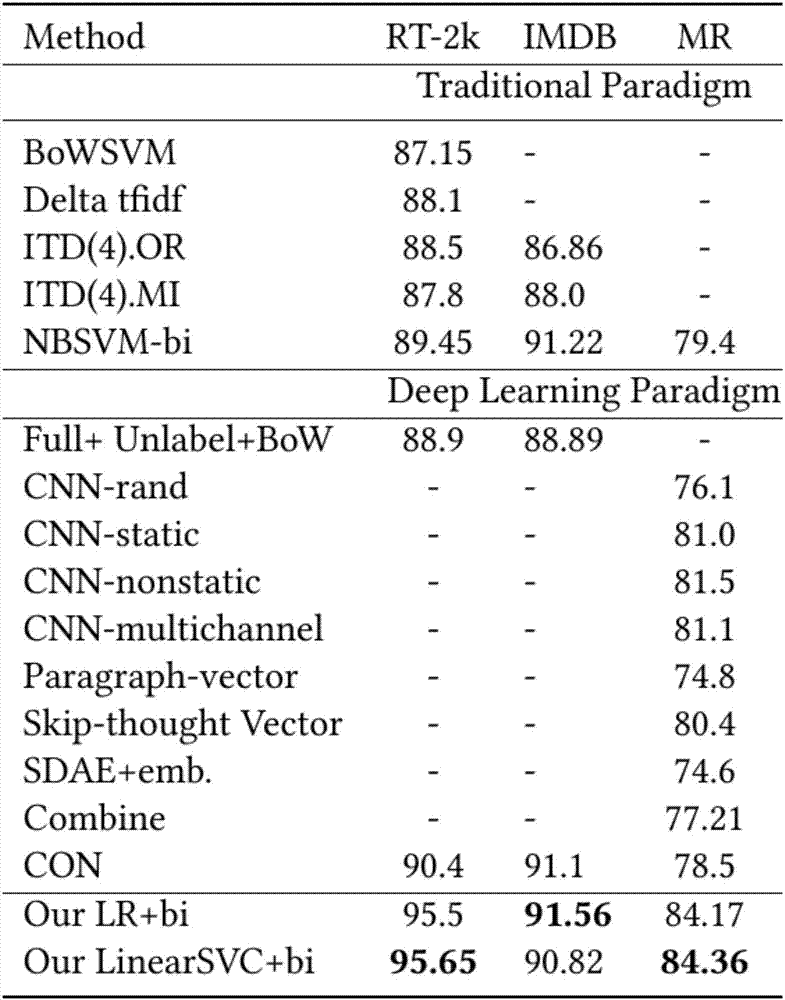Text positive and negative emotion classification method
A technology for emotion classification and text, applied in the field of natural language processing and machine learning, can solve the problems of failing to effectively capture the semantic information of emotional expression, failing to reflect the ability of word emotion classification, and not taking IDF smoothing factor into account, etc., to achieve Enhance portability and interpretability, improve classification effect, and improve classification accuracy
- Summary
- Abstract
- Description
- Claims
- Application Information
AI Technical Summary
Problems solved by technology
Method used
Image
Examples
Embodiment Construction
[0023] The present invention will be further described below in conjunction with embodiment.
[0024] This embodiment provides a text positive and negative emotion classification method, including the following steps.
[0025] Step 1, preprocessing all texts in the text collection, including removing HTML tags, punctuation marks, emoticons and numbers, to form a noise-free positive and negative text collection. The text set is expressed as D={d 1 , d 2 ,...,d m}, where d m Indicates the mth sentence or chapter in the text collection D.
[0026] Step 2: Use the bag-of-words language model to perform unigram word segmentation and bigram word segmentation on the positive and negative example texts to form a non-repetitive multi-dimensional feature vector space.
[0027] Step 3, using the feature weight calculation method with adjustable parameters, to calculate the variant word frequency inverse text frequency for each dimension feature vector in the multi-dimensional featur...
PUM
 Login to View More
Login to View More Abstract
Description
Claims
Application Information
 Login to View More
Login to View More - R&D
- Intellectual Property
- Life Sciences
- Materials
- Tech Scout
- Unparalleled Data Quality
- Higher Quality Content
- 60% Fewer Hallucinations
Browse by: Latest US Patents, China's latest patents, Technical Efficacy Thesaurus, Application Domain, Technology Topic, Popular Technical Reports.
© 2025 PatSnap. All rights reserved.Legal|Privacy policy|Modern Slavery Act Transparency Statement|Sitemap|About US| Contact US: help@patsnap.com

